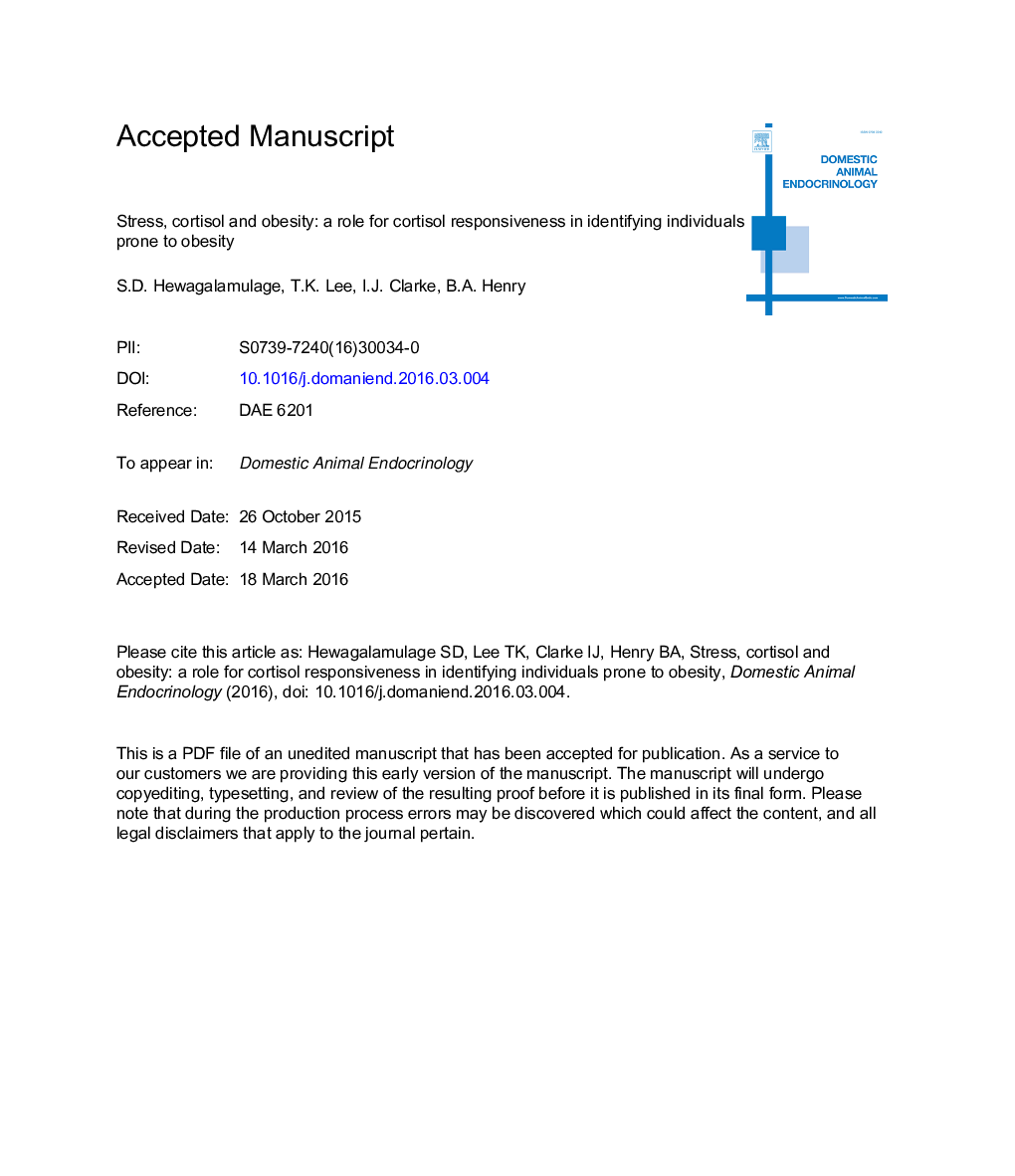| کد مقاله | کد نشریه | سال انتشار | مقاله انگلیسی | نسخه تمام متن |
|---|---|---|---|---|
| 10961149 | 1101316 | 2016 | 29 صفحه PDF | دانلود رایگان |
عنوان انگلیسی مقاله ISI
Stress, cortisol, and obesity: a role for cortisol responsiveness in identifying individuals prone to obesity
ترجمه فارسی عنوان
استرس، کورتیزول و چاقی: نقش واکنش کورتیزول در شناسایی افراد مبتلا به چاقی
دانلود مقاله + سفارش ترجمه
دانلود مقاله ISI انگلیسی
رایگان برای ایرانیان
کلمات کلیدی
محور هیپوتالامو-هیپوفیز-آدرنال، مصرف غذا، هزینه انرژی، پاسخ کورتیزول، استرس و چاقی،
موضوعات مرتبط
علوم زیستی و بیوفناوری
علوم کشاورزی و بیولوژیک
علوم دامی و جانورشناسی
چکیده انگلیسی
There is a strong inter-relationship between activation of the hypothalamo-pituitary-adrenal axis and energy homeostasis. Patients with abdominal obesity have elevated cortisol levels. Furthermore, stress and glucocorticoids act to control both food intake and energy expenditure. In particular, glucocorticoids are known to increase the consumption of foods enriched in fat and sugar. It is well-known that, in all species, the cortisol response to stress or adrenocorticotropin is highly variable. It has now emerged that cortisol responsiveness is an important determinant in the metabolic sequelae to stress. Sheep that are characterized as high-cortisol responders (HRs) have greater propensity to weight gain and obesity than low-cortisol responders (LRs). This difference in susceptibility to become obese is associated with a distinct metabolic, neuroendocrine, and behavioral phenotype. In women and ewes, HR individuals eat more in response to stress than LR. Furthermore, HR sheep have impaired melanocortin signaling and reduced skeletal muscle thermogenesis. High-cortisol responder sheep exhibit reactive coping strategies, whereas LRs exhibit proactive coping strategies. This complex set of traits leads to increased food intake and reduced energy expenditure in HR and thus, predisposition to obesity. We predict that cortisol responsiveness may be used as a marker to identify individuals who are at risk of weight gain and subsequent obesity.
ناشر
Database: Elsevier - ScienceDirect (ساینس دایرکت)
Journal: Domestic Animal Endocrinology - Volume 56, Supplement, July 2016, Pages S112-S120
Journal: Domestic Animal Endocrinology - Volume 56, Supplement, July 2016, Pages S112-S120
نویسندگان
S.D. Hewagalamulage, T.K. Lee, I.J. Clarke, B.A. Henry,
